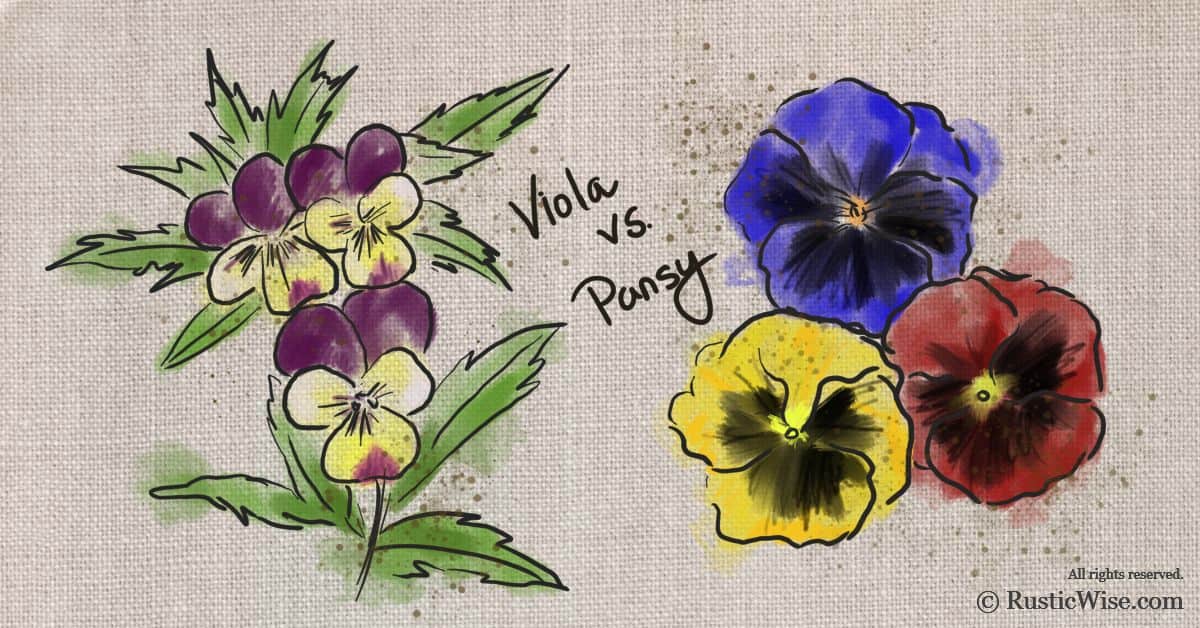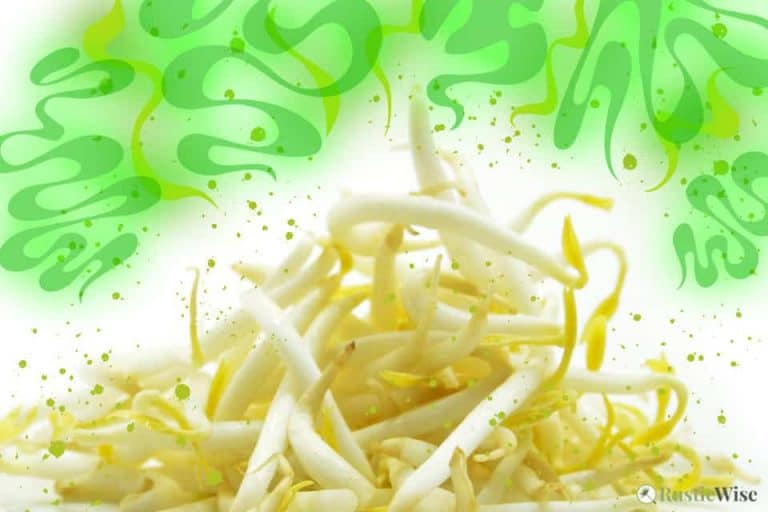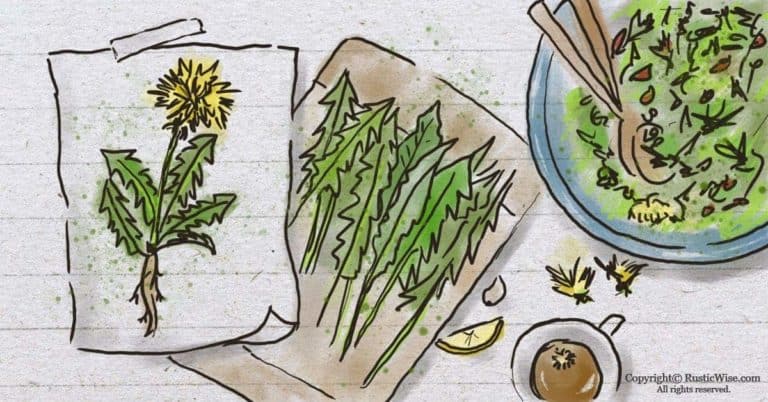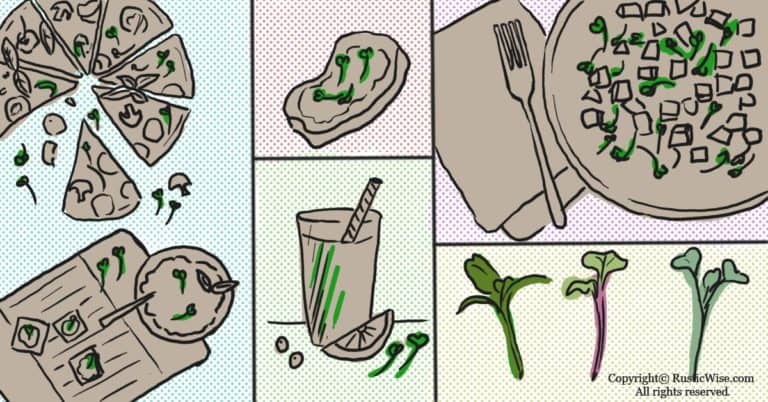Viola Flower vs Pansy: What’s the Difference?
It’s easy to see why there’s much confusion about the viola flower vs pansy. They have similar shaped rounded petals, come in a variety of gorgeous colors, and do well in cool weather.
Perhaps the most well-known viola is the purple, yellow, and lavender Johnny Jump-up (Viola tricolor), also known as heartsease , or wild pansy (to make things even more confusing!). It’s widely believed that modern pansies have developed and evolved from Johnny Jump-ups originating in Europe and eventually spreading throughout North America.
Pansies and violas belong to the Viola genus of flowering violet plants. So in a nut shell, pansies all fall under the umbrella of Viola, while violas are not necessarily pansies. There are more than 300 varieties of pansies and hybrids today.
So here’s a quick comparison of the viola flower vs pansy. Let’s take a closer look at the similarities and differences of these two lovely flowers.
“Nobody can keep on being angry if she looks into the heart of a pansy for a little while.”
― L.M. Montgomery, Anne of Green Gables
Are violas and pansies perennials?
Well sort of. Technically violets and pansies are perennials, but are often treated as annuals.
However some varieties such as the Johnny Jump-up are prolific self-seeders (hence their namesake) and often spread around the garden without any help.
These popular blooms last for many months from spring and even throughout winter in warmer zones. Violas and pansies make wonderful fall flowers and if you’re lucky to live in a warm climate, you can enjoy them as winter flowers too.
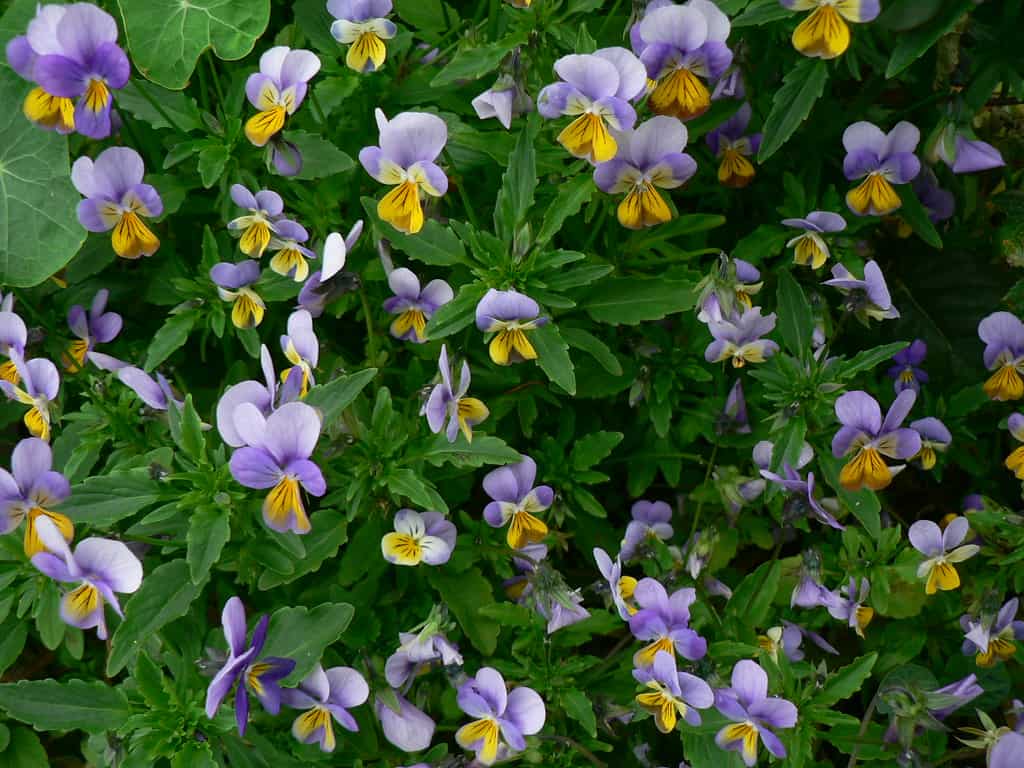
Credit: Hunda / Flickr, Johnny-Jump-Up
Viola flower vs pansy: similarities
Here are a few similarities between viola flowers and pansy flowers:
- They require well-drained soils.
- Most varieties bloom from spring and throughout winter.
- They can withstand cold, but wilt in extreme heat and humidity (although there are now some pansy hybrids designed to better endure heat).
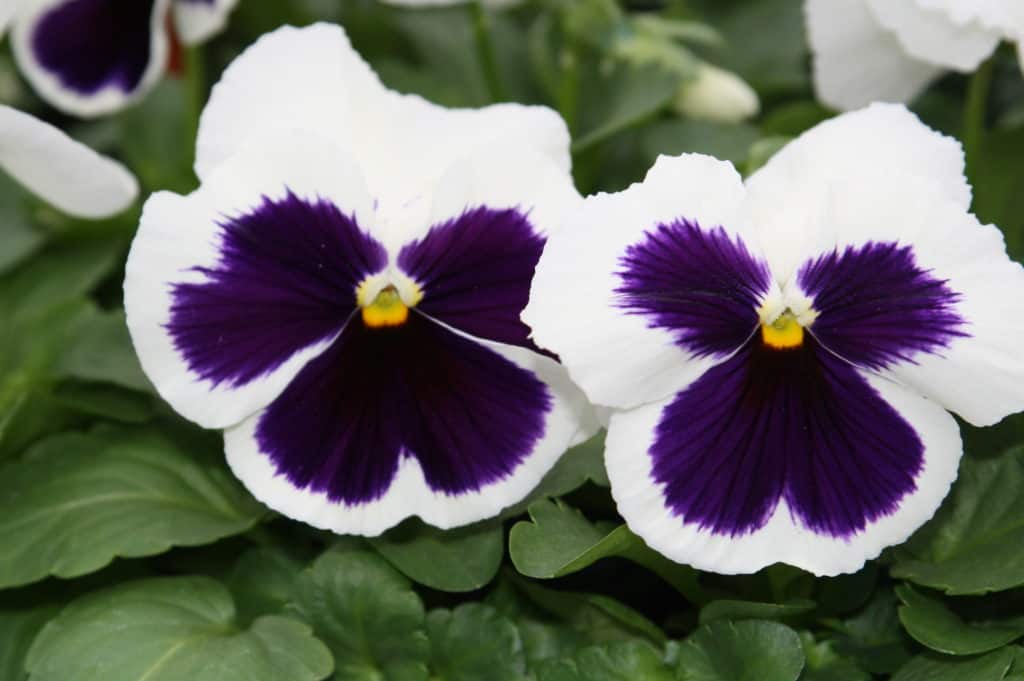
Credit: Kate Field / Flickr, Pansy Spring Matrix Ocean
Viola flower vs pansy: differences
There are so many varieties and hybrids of violets and pansies that it can be hard to distinguish them. If you really want to tell the difference, take a look at the petals.
Violas usually have three down-turned petals and two facing upwards. Pansies typically have one down-turned petal and four upwards-facing.
Viola flowers are smaller but appear in greater number. The overall viola plant tends to hug the ground more than their taller pansy counterparts and grow to 3–8 inches (7.6-20.3 centimeters) in height. Violas make for great ground cover. Typical colors of violas include blue, white, yellow, and violet.
Pansy flowers are larger and come in more color varieties (including blotched cultivars) such as red, yellow, orange, pink, white, blue, and violet. Pansies grow taller to about 6–12 inches (15.2–30.5 centimeters) tall.
Ideal growing conditions
Both pansies and violas like rich, well-drained soil. Too much moisture affects their root growth and may cause root or crown rot. The ideal time to plant is in early to mid-fall.
They do well in partial shade, or sun. Violets do tend to like shade as their natural habitat in deciduous forests means they are often lying in the shade of trees. Although a spot of afternoon sun for violets keeps them happy, especially when in bloom.
Pansies thrive in full sun to partial shade.
When flowers are in bloom, remember to pluck the dried flowers (deadheading) to help preserve the plant’s energy into making more beautiful blooms.
Many garden pests can’t resist snacking on the flowers of violas and pansies. Watch out for slugs, aphids, cutworms, and the aptly-named pansyworms.
If you don’t want self-seeding violets spreading throughout your garden, you’d do well to keep them in containers.
Cool season flowers
Even with a blanket of snow, you’ll see pansies poke their heads out making them a perfect flower for your cool season garden.
While pansies and violets do fine in cooler temperatures for short periods, keep an eye out when the temperature is expected to drop for several days below 20 degrees Fahrenheit (minus 6 degrees Celsius). It helps to lay pine straw several inches thick over the entire plant to maintain heat and provide protection from wind and cold. When the cold blast is over, use a rake to gently remove the pine straw aside.
You can also use cold-weather fabric to protect pansies and violets from sustained cold weather. Otherwise, these cool season flowers typically do well on their own.
A violet by a mossy stone half hidden from the eye;
Fair as a star, when only one Is shining in the sky.
—William Wordsworth
Violas are good for…
Choose violas if you want:
- Full, lush, ground coverage in your garden.
- Many small flowers.
- A plant that lies low and creates a slight trail in containers.
- A pretty addition to your rock garden or woodland plant landscape.
- A tough flower (slightly hardier than the pansy) that lasts all winter.
- A shade-loving flower.
Pansies are good for …
Choose pansies if you want:
- A bright burst of color in your garden.
- A hardy cool-weather garden flower.
- Large blooms that create a beautiful border or edge.
- A larger selection of colors.
Are violas and pansies edible?
Yes, violas and pansies are edible. Just keep them away from your furry friends! While safe for human consumption, violets and pansies are slightly poisonous to cats and dogs causing stomach upset. If you have these flowers planted in your garden beds, keep an eye on them. You might prefer to use hanging pots instead for peace of mind.
Beware of poisonous lookalikes! Wild violets have some poisonous look-alikes such as lesser celandine (Ficaria verna) which have very different flowers, but very similar-looking leaves. Please be careful when foraging wild flowers. Only harvest flowers that you can identify with certainty.
Ancient Greeks harvested Johnny Jump-ups for medicinal purposes to cure coughs and colds. Many people today prefer to use sweet violet (Viola odorata, Violaceae) for edible and medicinal purposes. Violets have anti-inflammatory and diuretic properties.
You’ve likely seen cakes, desserts and salads adorned with the whole flower or petals of pansies and violets. The slightly sweet, slightly wintergreen flavors of the flowers make a great addition to a variety of dishes. Leaves and stems are slightly spicy and add a dash of flavor to salads. Avoid using the roots of violets as they can cause an upset stomach.
The best time to harvest pansies and violas is in the morning when blooms are at their peak. Just pinch off a flower whole. You can also pick the base of the flower along with the petals. To preserve flowers, try drying them, or applying a layer of sugar water for a sweetened touch.
Conclusion
So that’s the comparison between viola flowers vs. pansies. Whichever variety you go with, you won’t be disappointed. So long as they have well-drained soil and are not in extreme heat, violets and pansies are easy to care for. You can enjoy their blooms from your window for most of the year and also enhance your salads and desserts with their petals.

Author: Theresa Tesolin
Theresa is co-founder of RusticWise. She helps people unleash their inner DIY spirit by encouraging them to get dirty and make or grow something from scratch.

